What to do in Örebro? In fact, Örebro has a lot to offer, whether you like culture, history or perhaps nature. Örebro Castle is a landmark, as is the tall Mushroom. You will also find the charming open-air museum Wadköping and several beautiful nature areas.
Innehållsförteckning
Örebro
Örebro is Sweden's sixth or seventh largest city, depending on which list you look at. There are a bunch of really grand buildings here, while the city has a bit of small town charm in a way. We have recently visited the city with our motorhome, and we have previously made some excursions in the surrounding area. Here are our top tips for sights, activities and experiences in Örebro.

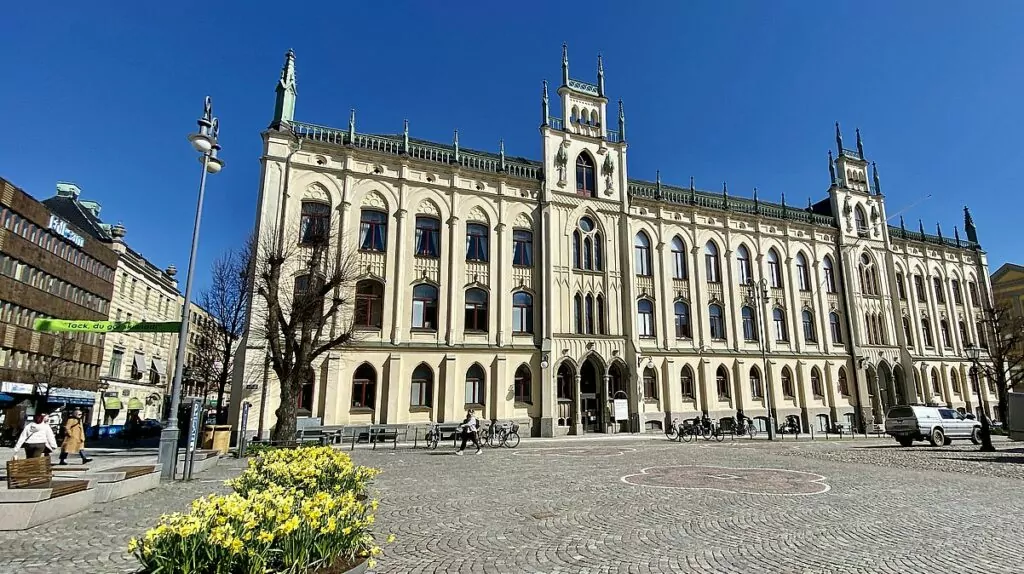
Örebro is located on the western shore of Lake Hjälmaren, in the landscape of Närke.
What can you do in Örebro?
So what can you see and do in Örebro? All kinds of things, actually! We have collected our best tips here in a list.
1. Walk or cycle along Svartån and Stora Holmen.
The Svartån river runs like an intense nerve through the whole of Örebro. It's great to walk or cycle along the river, passing beautiful places like Wadköping and the city park along the way.

In the middle of Svartån lies Stora holmen, which is ... yes, a large islet. It is green and nice to walk or cycle here, but above all the islet is a popular place for families with children in the summer. The Lillputt train chugs around on the small tracks, you can take the small rowing ferry Wictoria from Stadsparken and the islet is spiced up with a farm, mini carousels and an ice cream parlour.


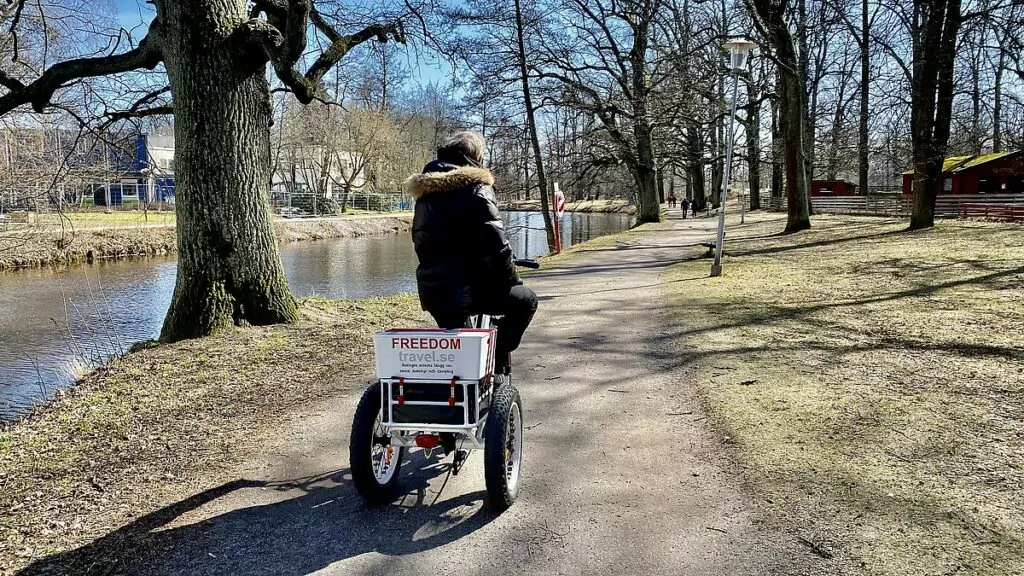
2. Walk in the city park
Örebro has a large and beautiful city park. We were here a little too early in the year to enjoy the real floral splendour, but it was still nice to walk around among the plants and waterways.


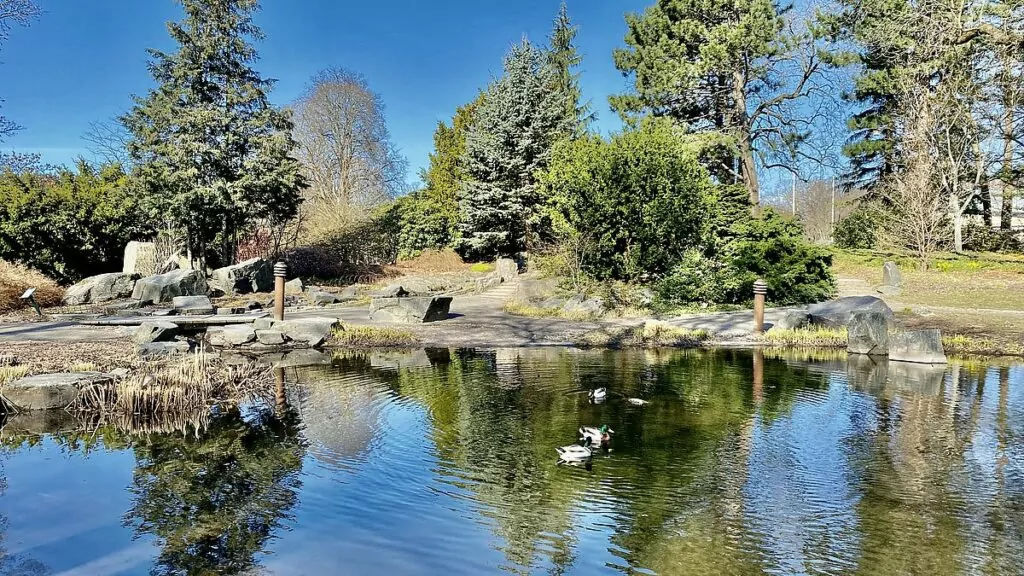
It has a large playground and a stage, where concerts are sometimes organised in the summer. The park also has a restaurant, café and bakery.

3. Visit Örebro Castle
Örebro Castle is a magnificent castle rising powerfully in the centre of the city. The castle was built in the Middle Ages as a simple defence castle with a prison, and was rebuilt during the Vasa era into an impressive royal castle with large towers. Today, the castle serves as the residence of the county governor. Parts of the castle are also open to tourists and one of the towers houses a café, Lill-Anna's Castle Café.

We are travelling during the low season and corona time, and have become accustomed to most things being closed. Therefore, we were almost ridiculously excited when we realised that it was possible to buy tickets to see the inside of the castle during the weekend.
Due to the pandemic, the regular tours were cancelled, but you could pre-purchase a ticket for a specific time to walk around on your own. It also said that "one of our castle guides will be on hand to tell you more about the castle's history".
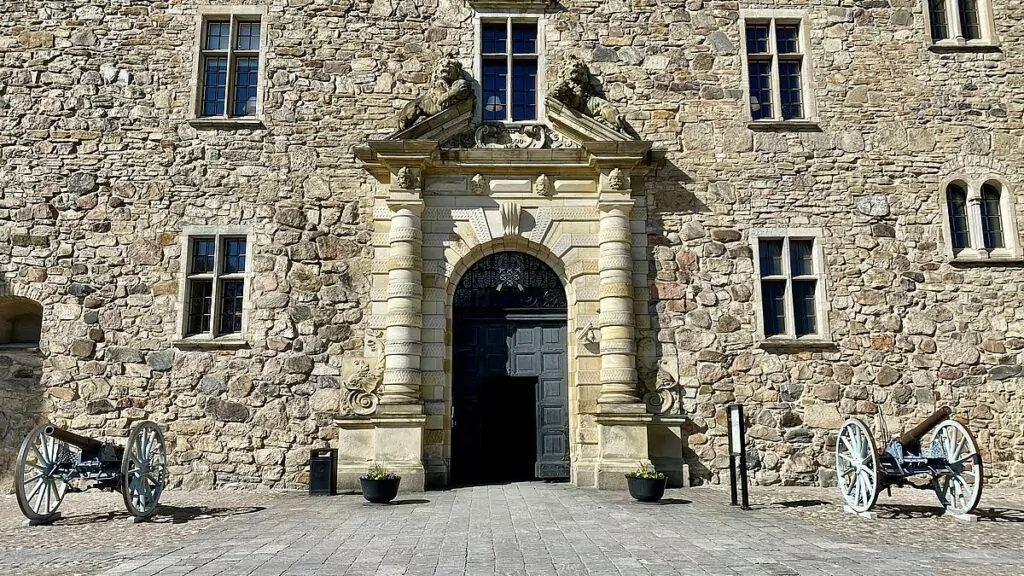


Unfortunately, we have to say that we were very disappointed. Most of the rooms were completely empty, with modern parquet floors and conference furniture. A young guy opened doors, but there was no one there to tell us anything about the castle. The only thing to look at was a minimal exhibition about the construction of the building and a room with paintings.
But note! We are completely safe that you can have a much better experience if you take part in a guided tour. During the high season, more rooms will also be open to visitors, such as cellar rooms. In addition, ghost walks and other exciting events are sometimes organised.

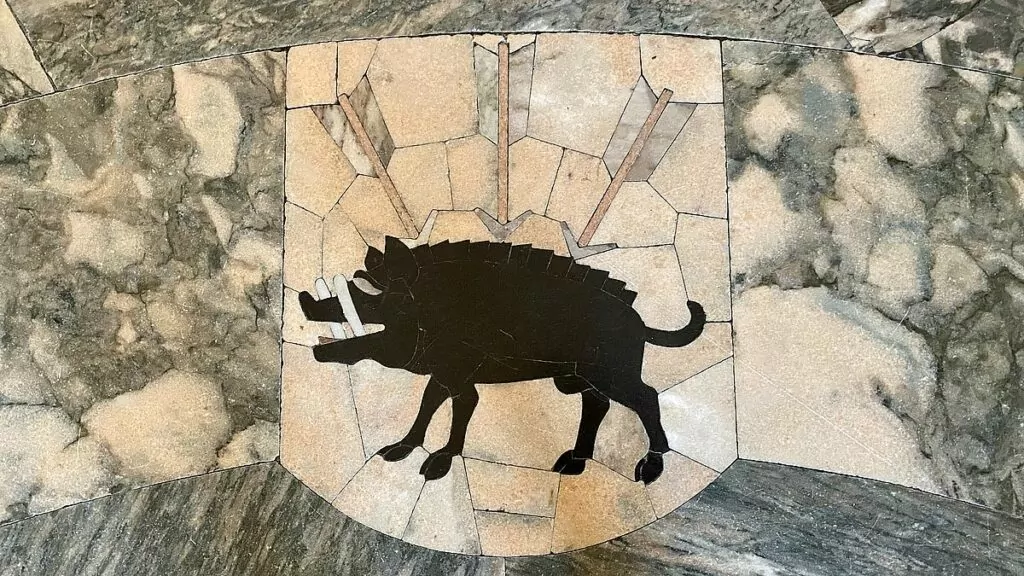

4. see churches: Church of St Nicholas and Olaus Petri.
At Stortorget in the centre of Örebro you will find the Nikolaikyrkan, or St. Nicolai church. The church is as old as the city and has been the main church since the Middle Ages. Engelbrekt was buried here in 1436, and Jean Baptiste Bernadotte (Karl XIV Johan) was elected as heir to the Swedish throne in 1810.



The Olaus Petri Church is located at Storgatan 40 in Örebro, and we passed it on our way from the city centre to the Svampen water tower. The church is named after the medieval reformer Olaus Petri. Outside the church you will therefore find a statue of Olaus Petri and his brother Laurentius Petri.
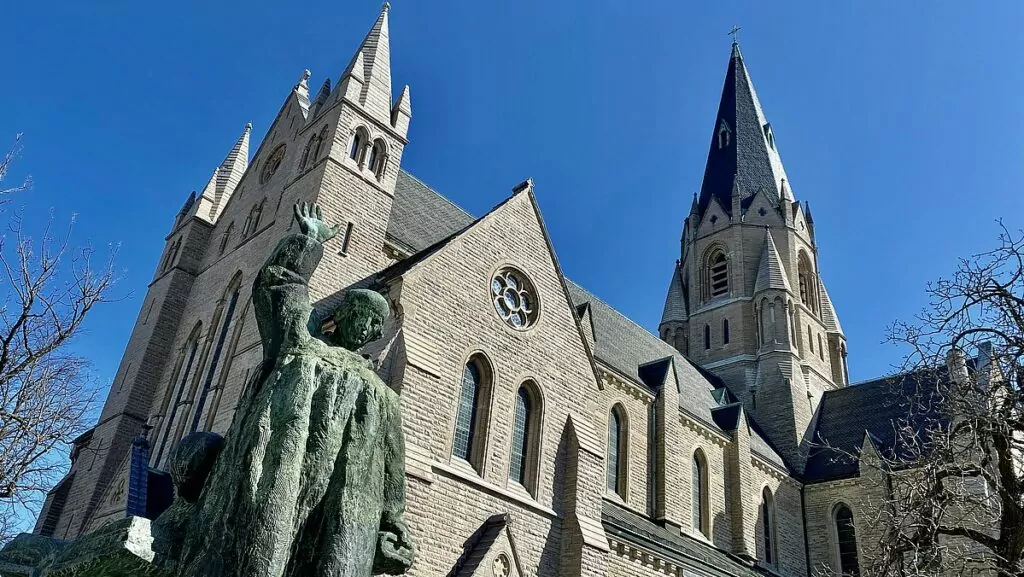

5. Enjoy the view from the top of the Svampen water tower.
The Mushroom is a landmark in Örebro and one of the city's most popular attractions. Opened in 1958, the 58 metre high building was the first mushroom-shaped water tower in the world. But soon an almost identical water tower would be built in a completely different part of the world... in Riyadh, Saudi Arabia!
King Faisal bin Abdul Aziz was immediately delighted when he saw a picture of the water tower. He wanted one too! The Saudi engineers travelled to Örebro to negotiate with the city planning office, who agreed to the copy in order to "avoid complications between Örebro and Saudi Arabia".



We took the lift up to the site and checked out the surroundings in all directions. Then we took the opportunity to have lunch in "Skybar Restaurang Svampen". Of course, we started the lunch buffet with the tower's traditional mushroom soup. Affordable, good and friendly service!

6. Time travel to the Wadköping Open Air Museum
Wadköping is a living open-air museum in Örebro where you can walk around in beautiful historical environments, reminiscent of how life may have been in the past. However, the name of the neighbourhood is entirely fictional and has been borrowed from Hjalmar Bergman's novel "Markurells i Wadköping" from 1919.
In the neighbourhood you will find picturesque houses and alleys, charming craft shops, as well as the restaurant Gamla Örebro and the Jeremiah Bakery. When the museums are open, you can also visit the childhood home of cookbook author Cajsa Warg, the Hjalmar Bergman Museum and the School Museum.

7. Experience the Oset and Rynningeviken nature reserve and Nature House
Oset and Rynningeviken is a nature reserve not far from the centre of Örebro. If you follow the river Svartån from the centre, past Stadsparken and Alnängsbadet, you will soon reach the nature reserve.
The nature reserve offers a varied nature with a rich bird life. There are plenty of rest areas, barbecue areas and cycle and walking paths. For example, you can walk the Lilla Å promenade, a four-kilometre-long trail with ten sculptures. Here you will also find Naturens hus, where you can have coffee, lunch or perhaps a glass of wine. A fantastic environment!

8. Camp and swim at Gustavsvik.
Gustavsvik is a 5-star campsite just outside the centre of Örebro. During the summer season you can experience a real family adventure here. There is a children's adventure club, a swimming adventure called Lost City, a mini farm, adventure golf, bouncy castles, electric cars, an arcade and a multi-sports arena. The campsite also has a restaurant with live music.

9. Take a trip to Brevens Bruk and Boo Castle.
Brevens Bruk, located southeast of Örebro, was once an ironworks, but is now primarily a forestry and agricultural enterprise. You can come here to experience the surrounding environment and natural areas, and you can almost certainly see hundreds of deer.

Nearby is Boo Castle, a beautiful terracotta-coloured palace reminiscent of a fairytale castle. The estate is owned and managed by the Hamilton family and mainly organises hunting and fishing. You can stroll around the small park or visit the church, where a special type of daffodil blooms in spring.

10. Take a trip to Askersund and Stjernsund Castle
South of Örebro, in the northern part of Lake Vättern, you will also find the charming little town of Askersund. Here you can stroll among low wooden houses, cafés, boats and along waterside footpaths. Just outside the town, in northern Vättern, there is an archipelago with 250 islands, islets and skerries.

Outside Askersund you will also find Stjernsund Castle. The history of the estate goes back to the 17th century, when Johan Oxenstierna built a manor house here. The neoclassical castle you see today was built in the 18th century by the mill owner Olof Burenstam. If you get the chance to take a guided tour of the castle's halls, it's interesting!

More things to do in Örebro for culture and history lovers
- Biological Museum is an old-fashioned museum with stuffed animals - almost like a museum of museums of the past.
- Karlsund mansion with garden is a cultural reserve with cultural and industrial history, craft workshops and more.
- Art in a pile is a sculpture park at Kvarntorpshögen in Kumla.
- OpenART is a recurring art exhibition where artworks are displayed in streets and squares, shopping centres and facades.
- Statue of Engelbrekt Engelbrektsson can be found in Stortorget, and commemorates the leader of the Engelbrekt rebellion in 1434 against Erik of Pomerania.
- Örebro Art Centre shows various exhibitions. You can also take a look at public art in the city.


More things to do in Örebro for nature lovers
- Bergslagsleden is a well-known hiking trail that runs through the entire Örebro region. The trail is divided into 17 stages ranging from 7 to 22 kilometres in length.
- Garphyttan National Park, which lies to the west of Örebro, offers deciduous forests in floral splendour.
- Kilsbergen offers hiking, including the Gölje Trail and the Rusakulan viewpoint, 265 metres above sea level.
- Canoeing on the Svartån river can be lovely in the summer.
- Tiveden National Park is a fantastic and magical nature experience 9 kilometres south of Örebro.
- Tysslingen is a lake known for its whooper swans.
- Vinön is an island in Lake Hjälmaren, which is popular for summer excursions. It can be reached by ferry from Hampetorp.
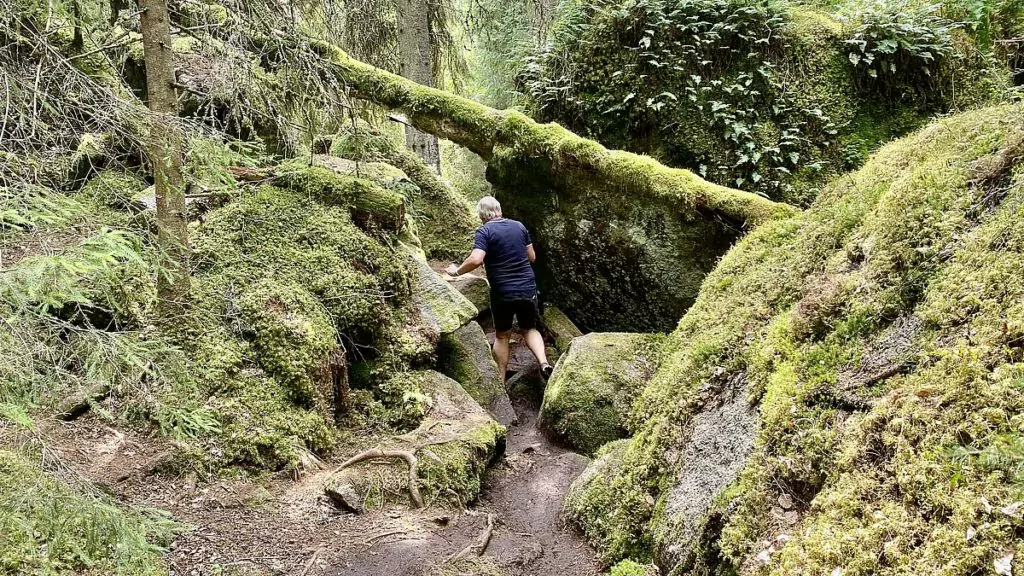
More things to do in Örebro for those who like shopping and food
- Old Örebro is a popular restaurant in Wadköping. The Jeremiah Bakery is also popular.
- Grythyttans Gästgivaregård north of Örebro is associated with Carl Jan Granqvist and is famous for its food.
- Markets in Wadköping are organised from time to time, such as Christmas markets, food markets, antique markets and flea markets.
- Microbreweries have flourished in the city, such as Närke kulturbryggeri and Örebro brygghus.
- Örebro market hall is located at Kungsgatan 15 in Viktoriahuset.

More to do in Örebro with children
- Alnängsbadet is a bathing area with a jetty, a wheelchair ramp and toilets.
- Children's castle is that the castle sometimes organises activities specifically for children, such as with Laban the Little Ghost.
- Lost City is a big swimming adventure with water slides, at Gustavsvik campsite.
- Technical mill at Karlsund Manor is a mill building from 1889 with a technical museum. There is also a "Children's Garden" at the mansion.

Where can you stay or park your motorhome?
If you are travelling by motorhome, you can stay overnight at Alnängsbadet. It is free of charge for 24 hours. The site is nicely located by the swimming area, within easy cycling distance of the city centre, and is apparently very popular during the high season. A rubbish bin is available and there are also toilets at the beach.
If you prefer camping, you can go to the 5-star campsite. Gustavsvikwhich is about 2.5 kilometres outside the city centre.

If you're not travelling with a motorhome, there are plenty of hotels and other accommodation options to choose from. We can't give you any personal advice, except to say that Hotel Borgen looks like a really cool place.
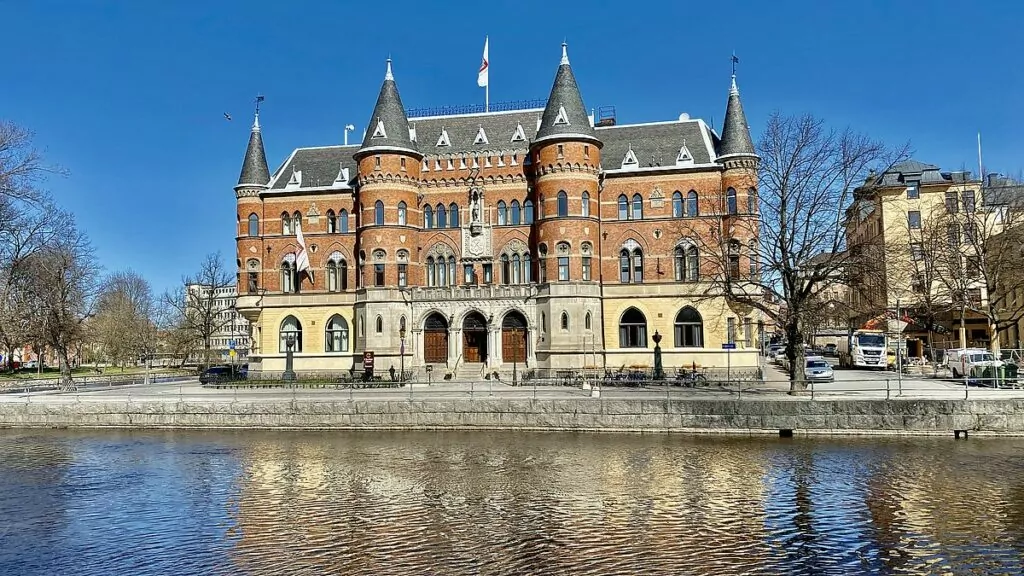
More to see and do near Örebro
Of course, there are not only things to see and do in Örebro, but also nearby. For example, you can discover cosy lake village.
Tiveden National Park - hiking in wild forests
Tiveden National Park offers wonderful nature experiences in wild forests with dramatically large boulders. Here there are ...
Wadköping - a living open-air museum in Örebro.
Wadköping is a living open-air museum in Örebro where you can walk around in beautiful historical...
Askersund - and Stjernsund Castle
Askersund is a charming and idyllic little town with low wooden houses, cafés, boats and walking paths....
Boo castle, Breven's mill and car park in Vingåker
Boo Castle is a beautiful terracotta-coloured palace reminiscent of a fairytale castle. Not too far...

More tips for things to do in Örebro?
Have you been to Örebro? Tell us about your experiences and your relationship with the city! Do you have even more tips for things to see and do in Örebro?
Facts about Örebro
- Landscape: foolishness
- County: Örebro County
- District: Örebro Nikolai, Örebro Olaus Petri, Örebro Mikael, Adolfsberg, Almby, Hovsta, Längbro, Mosjö, Kumla
- Population: More than 156 000 (2020)
- The name of the city: Örebro lies on both sides of the Svartån river. At one point you could wade across the river and over time a bridge was built here called "Örebron".
- Read more: You can find more information at Visit Örebro.
History of Örebro
- 1116: The Battle of Örebro. In this battle, King Magnus Henriksson was killed by Karl Sverkersson.
- 13th century: Sometime during this period, Örebro was granted city privileges. At that time there were only the neighbourhoods between Storbron and Stortorget, and the city had only one street.
- 14th century: At this time there was a royal court in Örebro. It was probably King Magnus Eriksson who built a fortress where today's castle is located. There was a school at the Carmelite convent (Vårfruklostret).
15th to 17th century
- 1434: Sweden was ruled from Denmark by King Erik of Pomerania. Engelbrekt Engelbrektsson captured the castle that year and liberated it from the Danes.
- 16th century: Örebro, which was part of Duke Karl's (Charles IX) duchy, was given exclusive rights to trade in iron in the region and traded with Bergslagen. Several parliaments were held in the city and King Charles XI had the castle rebuilt into a modern Renaissance palace.
- 17th century: The first major company in the city, Örebro Gewehrsfaktori, was founded by Duke Karl.
19th to 20th century
- 1810: The Parliament elected Jean Baptiste Bernadotte, Prince of Pontecorvo (later Charles XIV Johan), as heir to the throne.
- 1812: A new Freedom of the Press Act was adopted by the Parliament. On 18 July, the Peace of Örebro, between England and Russia, was signed in the 'Peace House'.
- 1844: A match factory was established and, before its closure (1892), became the largest in the country.
- 1863: The new town hall was completed.
- 1888: The Örebro canal and lock were inaugurated, allowing boats to travel to the centre of the city.
- Late 19th century: The city's first shoe factories were founded, and these, together with Kumla, became the centre of shoe production in Sweden.
- 1896: The Örebro biscuit factory was founded.
- 1960s and 1970s: The shoe and biscuit factories closed and an era in the city's history came to an end. The city was no longer a 'shoe and biscuit city'.
- 1977: Örebro University College was established, which became Örebro University in 1999.
Travelling to Örebro
- Car: Örebro is located west of Lake Hjälmaren. Take E18 or E20 from Stockholm, or E20 from Gothenburg.
- Trains: It is easy to take the train from, for example, Stockholm or Gothenburg. Check departures on sj.se.


















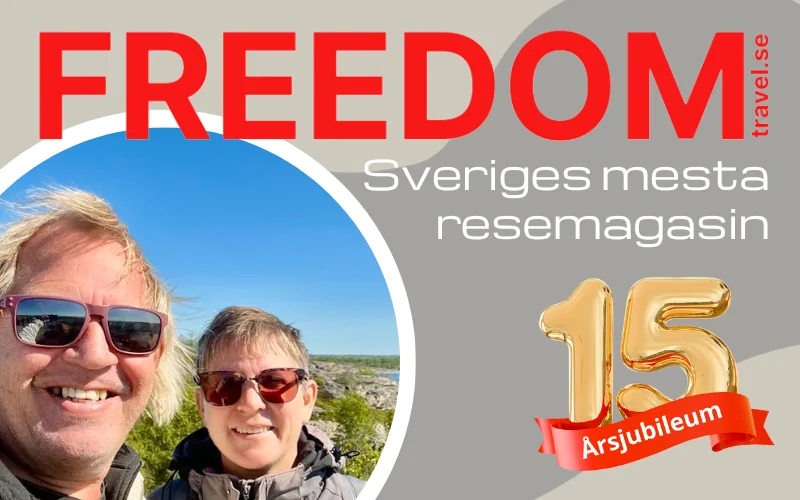


Lena - gott för själen says:
Truly a cosy city. A few years ago I went to a blog meeting at a girl's house, but stayed at the hotel Borgen. Recommended! we also strolled around the city centre and I thought I wanted to return to see more. Now I was even more excited.
Hug Lena
24 April 2021 - 7:24
Helena says:
Hotel Borgen looked really nice! We liked Örebro!
24 April 2021 - 18:02
4000mil says:
Örebro seems to be a nice town. I recently wrote a post where I named Närke as my 4th least visited landscape. But I have visited Svampen.
24 April 2021 - 8:57
Helena says:
We also have several lansdskap with large white spots. Probably have quite a few left in Närke too 😉.
24 April 2021 - 18:06
Gunillq says:
The Fagertärn nature reserve is perhaps the county's most popular nature reserve. Every year thousands of tourists and county residents come to Fagertärn to enjoy the red water lilies, which are so well known that they hardly need any further introduction.
24 April 2021 - 10:50
Helena says:
Thanks for the tips! Sounds super nice with the water lilies!!!
24 April 2021 - 18:07
Kenneth+Risberg says:
Good job and nice presentation about Örebro.
I know a lot of what you described but not everything, so there will probably be more visits to the surroundings.
24 April 2021 - 18:16
BP says:
Almost a shame that Örebro is in the whining belt;-) Just kidding. Had a colleague who lived in Örebro and so I follow Steve who about a year ago moved into Sirishof in the middle of Stadsparken.
I have visited the city once and of course went up to the Mushroom. Funny that mushroom soup is still their traditional dish.
Örebro is an exciting city, especially during the summer with the Open Art exhibition with artworks/exhibitions in squares and on the Svartån river.
24 April 2021 - 20:59
Steve says:
It's been a long time since I looked in on you. How nice that you have been in my home area and even walked in my neighbourhood, in Stadsparken. It was D who told me that you were in Örebro. Have a good time!
27 April 2021 - 10:21
Visit Örebro says:
Hi! Thank you for your nice description of Örebro! You have really found both our "big five" and lesser known favourite places. Really fun to read your impressions of our city! When the Summer Castle opens, with our new exhibition The Queens, you are warmly welcome back to give the castle another chance. We look forward to inviting you to the castle then! MVH Örebrokompaniet (Visit Örebro)
02 May 2021 - 21:29